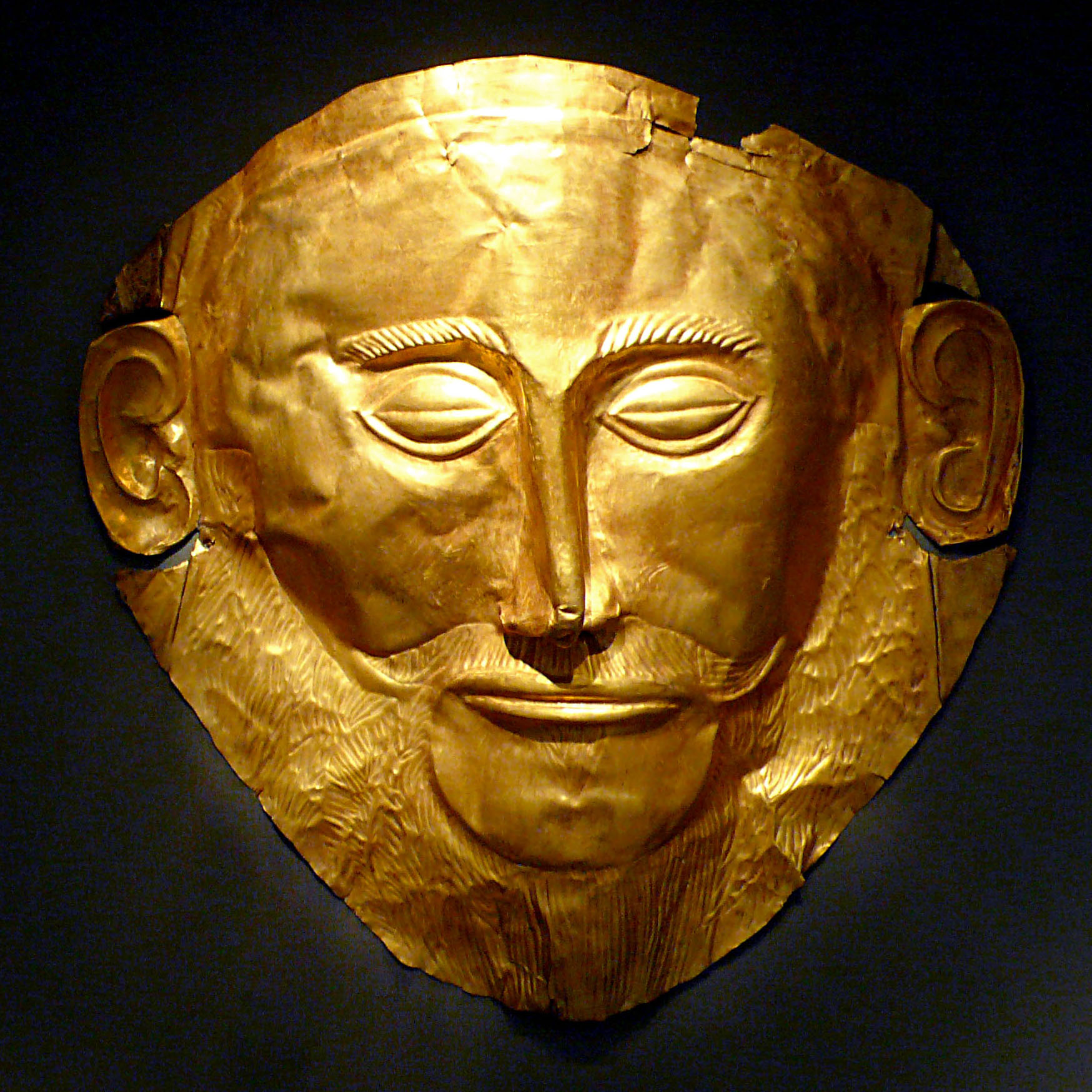Today we present something special: the Mona Lisa of Archeology ... the so-called Mask of Agamemnon. This funeral mask made of pure gold was discovered at the ancient Greek site of Mycenae in 1876. German archaeologist Heinrich Schliemann, who discovered it, believed that he had found the body of the Mycenaean king Agamemnon, leader of the Achaeans in Homer's epic of the Trojan War, the Iliad. Modern archaeological research suggests that the mask dates to about 1600 BC, predating the period of the legendary Trojan War by 300 to 400 years.
The mask depicts the imposing face of a bearded nobleman. It is made of a gold sheet with repoussé details. Two holes near the ears indicate that the mask was held in place of the deceased's face with twine. It was created from a single thick gold sheet, heated and hammered against a wooden background with the details chased on later with a sharp tool. Following his discoveries at the site, Schliemann notified King George of Greece via telegram, "I have gazed upon the face of Agamemnon." His fascination was so strong that he later even named his son after the legendary king. Close to the end of his life, the archaeologist accepted doubts as to the mask's true owner and is quoted as saying, "So this is not Agamemnon ... these are not his ornaments? All right, let's call him Schulze."
Gold, but humble!
P.S. Well, that's a gold leaf facial! If you're keen to see more gold from ancient Greece, we offer some glorious jewelry pieces.


 Unknown Artist
Unknown Artist